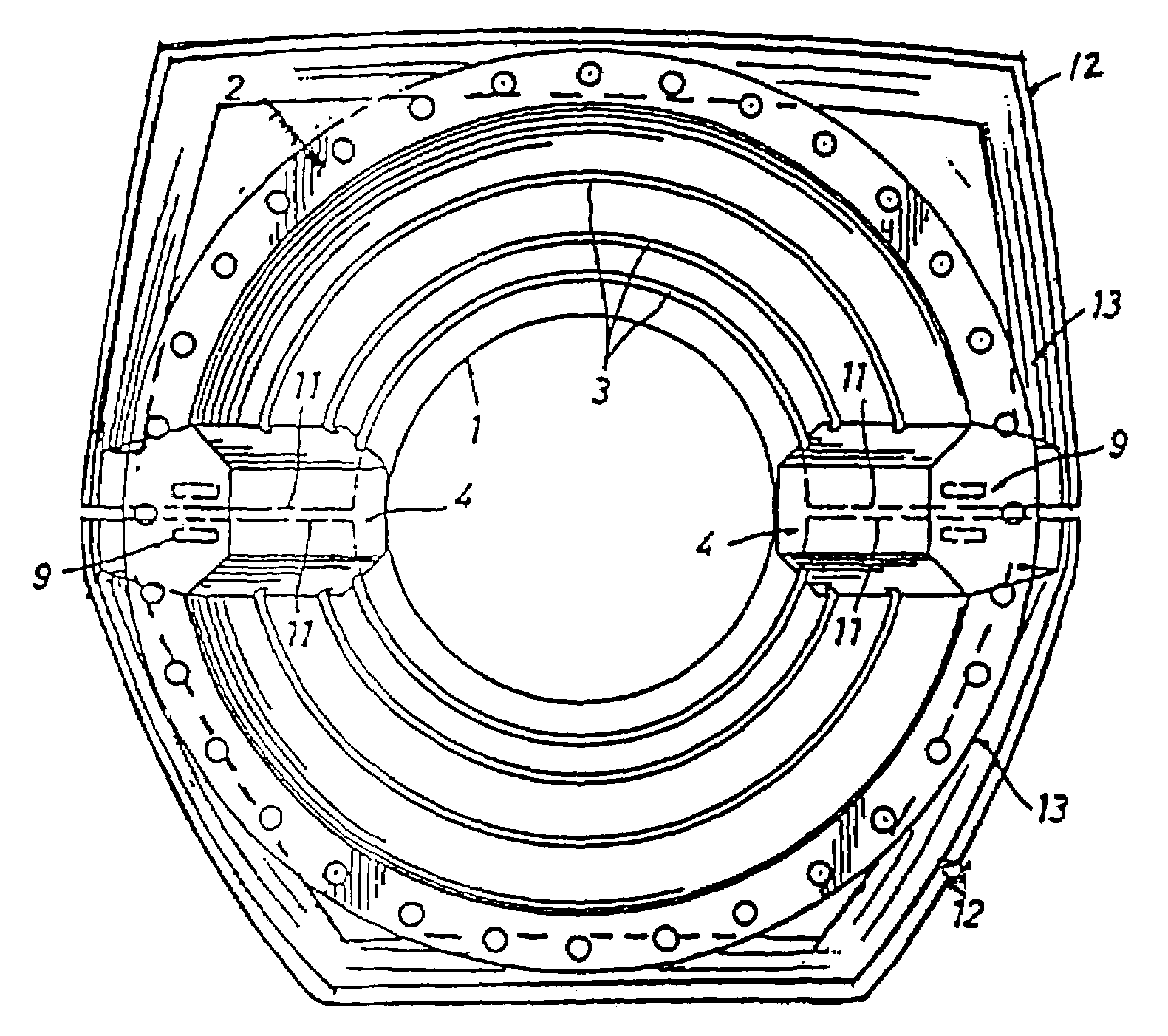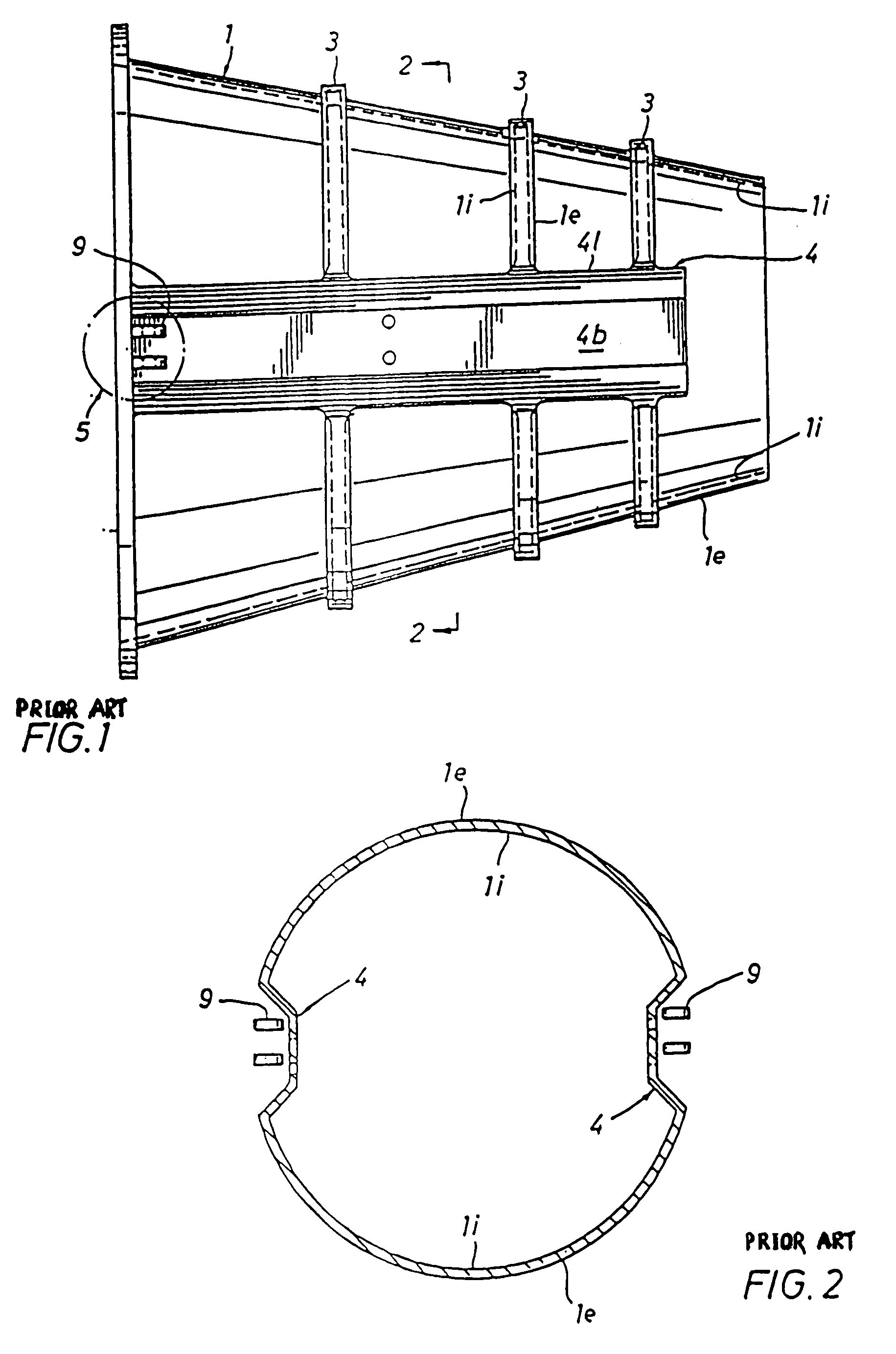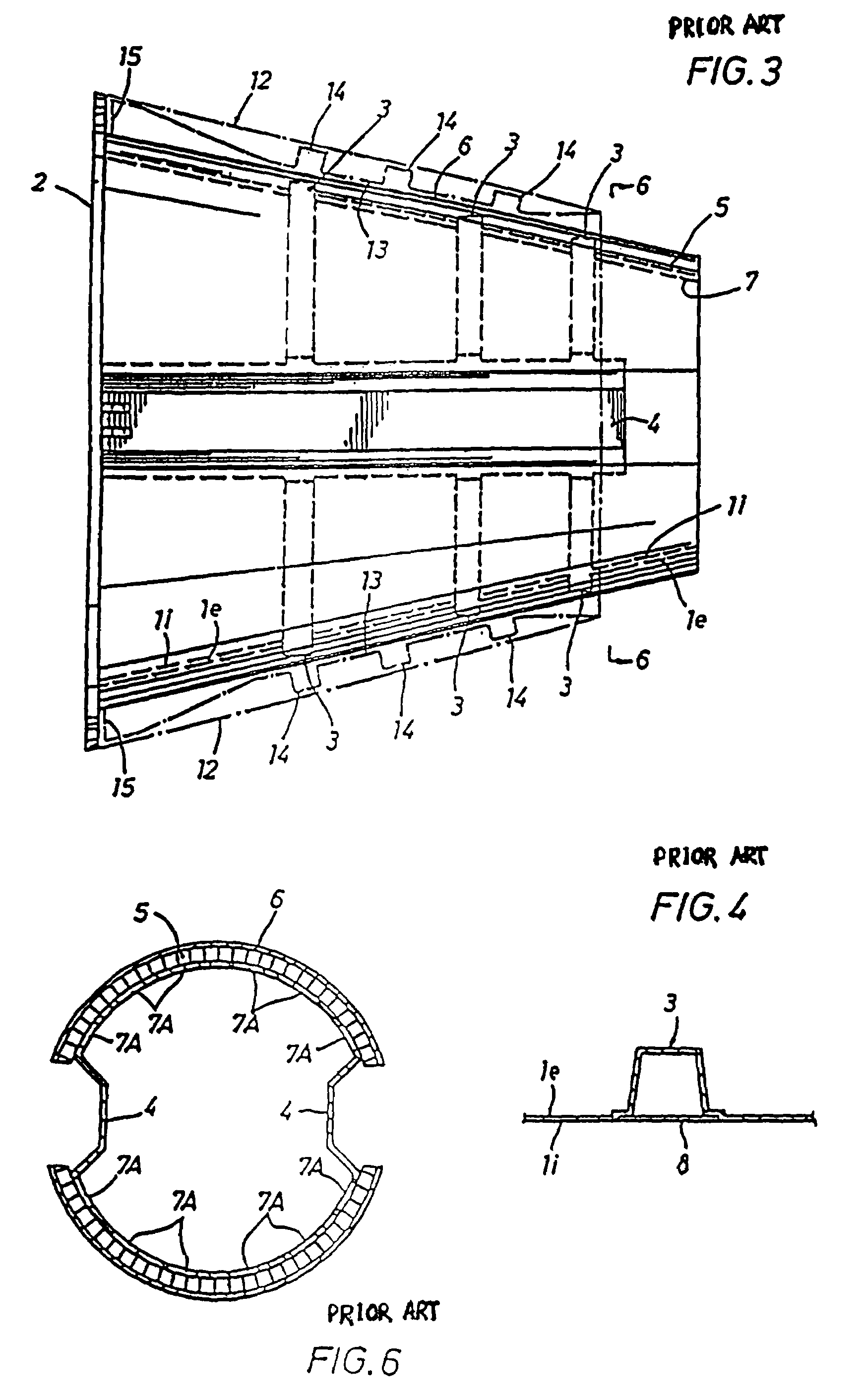Square ultra thrust reverser system
a reverser system and thrust technology, applied in the direction of machines/engines, jet flaps, transportation and packaging, etc., can solve the problems of affecting the performance of aircraft in various modes of operation, affecting the efficiency of aircraft, and allowing leakage of internal engine gas flow, so as to reduce the possibility of exhaust gas deflection laterally
- Summary
- Abstract
- Description
- Claims
- Application Information
AI Technical Summary
Benefits of technology
Problems solved by technology
Method used
Image
Examples
Embodiment Construction
[0041]The design concepts included in preferred embodiments of the thrust reverser system include an integrally constructed exhaust tailpipe best illustrated in FIG. 1E. The integrally constructed corrugated exhaust tailpipe 1 acts as the main structure carrying the various thrust reverser system components and loads. The thrust reverser loads (in the reverse mode) are transmitted through the tailpipe 1 to the engine bulkhead (not shown), to be bolted to a tailpipe attachment flange 2.
[0042]As illustrated in FIGS. 1–11, the integral corrugation construction of tailpipe 1 includes hats or ridges 3, which comprise annular corrugations sometimes referred to as ribs, which can be pressed into the tailpipe material or attached externally to the tailpipe skin, and internal axial blisters or depressions 4, located on each side of tailpipe 1. This integral corrugated design form a cage structure that permits the tailpipe itself to transmit reverse thrust loads directly, in lieu of requiring...
PUM
 Login to View More
Login to View More Abstract
Description
Claims
Application Information
 Login to View More
Login to View More - R&D
- Intellectual Property
- Life Sciences
- Materials
- Tech Scout
- Unparalleled Data Quality
- Higher Quality Content
- 60% Fewer Hallucinations
Browse by: Latest US Patents, China's latest patents, Technical Efficacy Thesaurus, Application Domain, Technology Topic, Popular Technical Reports.
© 2025 PatSnap. All rights reserved.Legal|Privacy policy|Modern Slavery Act Transparency Statement|Sitemap|About US| Contact US: help@patsnap.com



